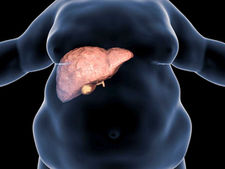
Ingrown Hair
One of the most distressing conditions that our patients who come to our hospital's general surgery clinic experience is ingrown hair.
What is Ingrown Hair?
Ingrown hairs, medically known as "pilonoidal sinus", are hair nests formed under the skin. As a result of the pores that allow body hair to grow, the hair cannot come out and is buried under the skin. This disease, which is caused by the combination of hair, fat and tissue under the skin to form inflamed tissue, disturbs individuals greatly. This disease, which can also be defined as hair-filled cysts, usually occurs most frequently in the hip area. Depending on the amount of hair collected in the area, ingrown hair swelling may increase. Excess weight, inadequate hygiene, staying in a sitting position for too long and excessive sweating are among the factors that cause ingrown hairs. It is a disorder that is more common in hairy areas, and it occurs especially in the coccyx area because this area is a very hairy area.
What are the symptoms of ingrown hair?
This disease, which does not show many symptoms at first, begins to show symptoms over time. The discomfort it causes to the person and the visible ingrown hair if it grows are the main symptoms of the disease. Pain in the ingrown hair area, discharge caused by inflammation, sometimes bad odor, itching and burning are other symptoms of ingrown hair. Diagnosis and Treatment of Pilonidal Sinus: Ingrown hair problems can be diagnosed through physical examination by a doctor. If they cause a lot of pain and bleeding, a blood test for inflammation may also be requested. While planning the treatment, antibiotics and painkillers may be administered for inflammation and discharge.
Consultation may be requested from an infection specialist. Additionally, medication injection can be applied to the ingrown hair area. Since ingrown hairs may recur in non-surgical treatments, the recommended method is usually surgical interventions.
With the endoscopic method, the inflamed area is detected and burned. Apart from this, ingrown hair surgery, which is the most definitive solution, is planned according to the patient's condition. The inflamed and ingrown tissue is removed and the incision is closed. Care of this area after the operation is very important. Creams can be used on the area, a hot shower is recommended, and sweating in the area should be prevented as much as possible. Our general surgeon will diagnose the disease after the examination and, if deemed necessary, will contact our infectious disease specialist to plan your treatment and help you.
FOR INFORMATION AND APPOINTMENT, YOU CAN LEAVE YOUR NUMBER OR ASK OUR EXPERTS
YOU CAN LEAVE YOUR NUMBER FOR INFORMATION AND APPOINTMENT AND ASK QUESTIONS TO OUR EXPERTS



-04.png)
-06.png)
-05.png)
-08.png)
-07.png)























